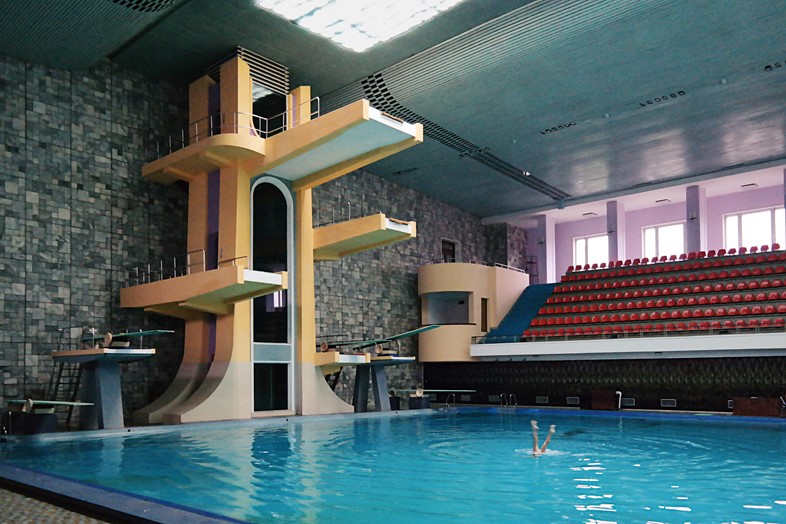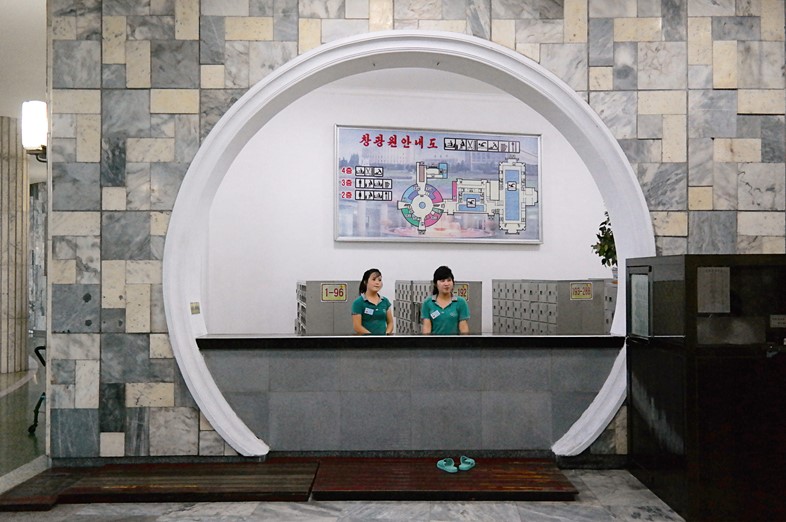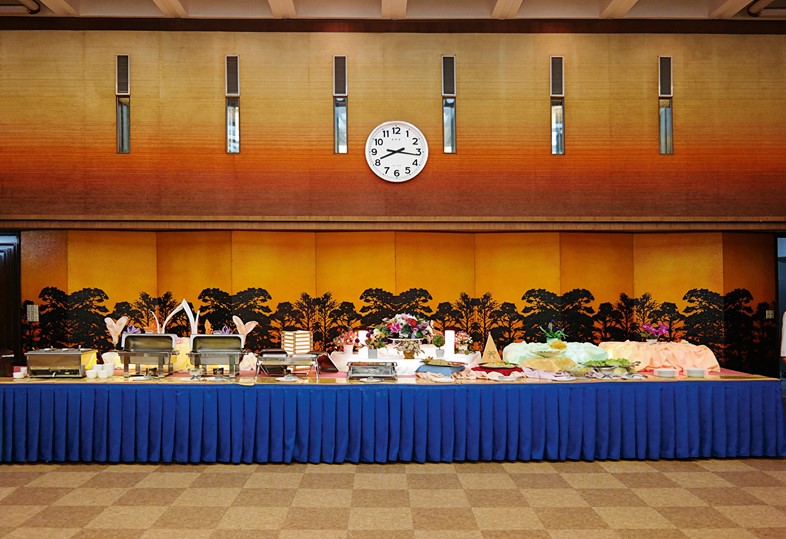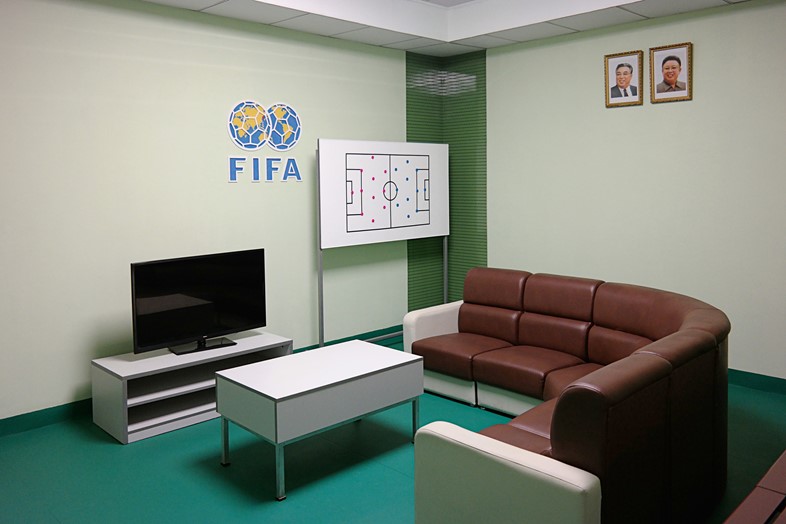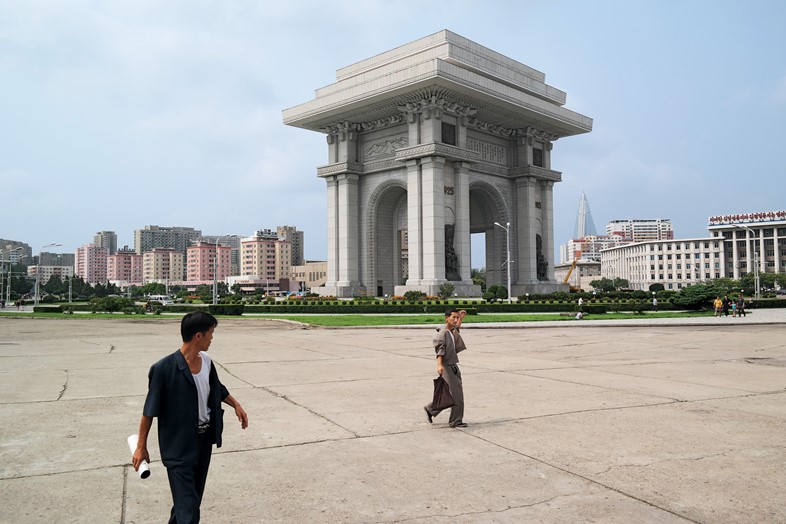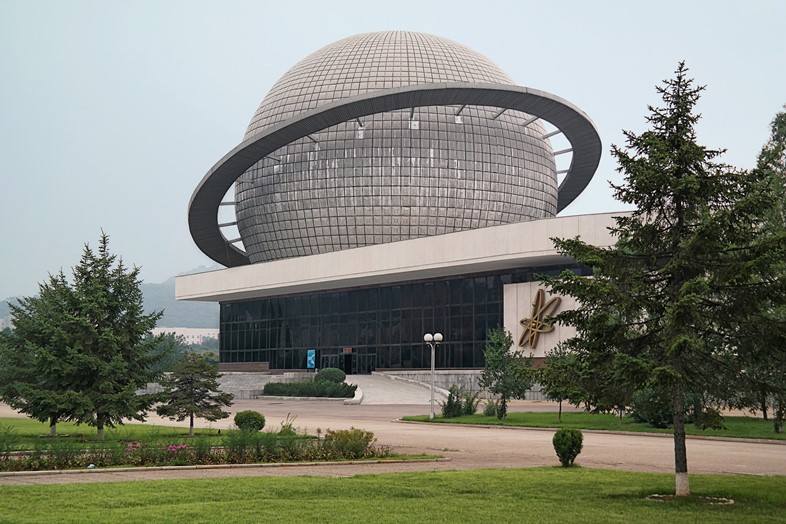Is North Korea the most secretive place in the world? Rarely do we get a glimpse into life inside the closely guarded country, but Inside North Korea, a new book by London-based journalist and photographer Oliver Wainwright, lifts the shadowy veil and reveals a fantastical pastel-coloured “socialist fairyland”, as dubbed by leader Kim Jong-un.
Wainwright is a design critic for The Guardian and a former architect, who travelled to North Korea’s capital Pyongyang, which was rebuilt from scratch in 1953 following bombing during the Korean war. He spent ten days in the city and ventured into an array of buildings, noting that he had never been anywhere where “a national ideology is so totally embodied in the architectural fabric of the city”. The hard-back book collates around 200 photographs that depict the nation’s architecture and interiors in astonishing detail. Wainwright describes North Korean interiors as a “fascinating stage set” and a “precisely choreographed world where an idealised image of power and order is played out”. Journeying through monuments, museums and the arts, leisure, hospitality and Pyongyang’s metro, Inside North Korea is a whirlwind of the most outstanding and quirky architecture the country has to offer. The book tours readers through sci-fi-esque high-rises, neatly arranged and fluorescent-coloured public spaces and lavish chandeliered metro stations. Wainwright’s skillful pictures set up the scene and allow readers to create their own narrative of what it would feel like to live in such a place.
Looking at the brazen colour schemes and dramatic landmarks, it’s no surprise that North Korea hopes to be the next big tourist destination by 2020. The symmetrical, shiny and synthetic aesthetic is an indication of the country’s desire to offer a distinctive and highly theatrical experience. The city exudes a sense of dazzle and cinema with its overtly bold “kindergarten kitsch” aesthetic; many of the shots look like stills from a Wes Anderson film. Locations featured include the futuristic Changgwang Health and Recreation Complex where diving boards are reached by a elevator shaft faced with smoked glass, and the East Pyongyang Grand Theatre, recently renovated with peach-coloured curving walls, purple upholstered seats and blue vinyl floors. Everything feels something like yesterday’s idea of the future.
But what makes the visual language of North Korea unlike other places, is its leaders. The cityscape feels devoutly patriotic. ‘Eternal Leaders’ Kim Jong-un and Kim Il-sung are incorporated into the formation in every city, and regulations exist that state an entire wall in every room must be decorated with and devoted to the leaders. They are, as Wainwright describes “omnipresent” – whether it be through bronze casts, colourful mosaics or portrait paintings.
The city of Pyongyang itself is a pastel-coloured surprise. “There are blocks in minty green and terracotta, mustard and ochre, as well as more recent apartment towers that look like sticks of seaside rock,” describes Wainwright. This book thoroughly explores the politics of aesthetics – a window into the unpredictably colourful locker rooms, hotels, theatres and media centres of a nation we are rarely allowed to see inside.
Inside North Korea by Oliver Wainwright is published by Taschen on July 2, 2018.
